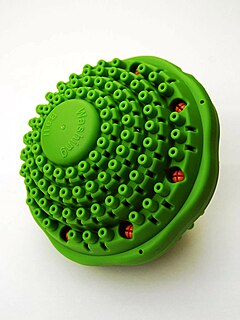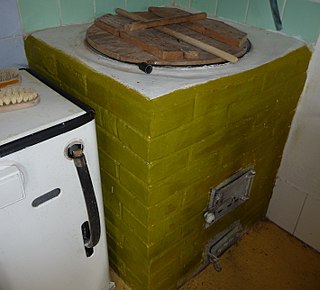 W
WA combo washer dryer is a combination in a single cabinet of a washing machine and a clothes dryer. It should not be confused with a "stackable" combination of a separate washing machine and a separate clothes dryer.
 W
WThe dispensing ball is a special plastic ball used to dispense liquid fabric softener in clothes washing machines that lack built-in softener dispensers. Liquid fabric softener has to be added at the correct time to a load of laundry in order to work effectively. In top-loading machines, the ball accomplishes this with no user input, other than the initial loading, and filling of the ball.
 W
WA laundry ball or washing ball is a product promoted as a substitute for laundry detergent. Producers of laundry balls often make pseudoscientific claims about how these balls work and exaggerate the extent of their benefits.
 W
WA posser, ponch or a washing dolly was historically a tool used for possing laundry by pumping the posser up and down on the laundry in the dolly tub or directly in the copper, or mixing laundry while hand washing it. Possers come in various forms; there is usually a vertical pole with a handle bar at the top but the base can be conical or domed. It has a double rim with a row of holes around the edge of the outer one. A similar tool with three legs was called a variety of names including posstick, peggy-legs, dolly-legs, and dolly-peg. Sometimes they took the form of a flat disk. The naming of each of these items was regionally specific and the specific meaning of word changed over time.
 W
WThe Thor washing machine was the first electric clothes washer sold commercially in the United States. Produced by the Chicago-based Hurley Electric Laundry Equipment Company, the 1907 Thor is believed to be the first electrically powered washer ever manufactured, crediting Hurley as the inventor of the first automatic washing machine. Designed by Hurley engineer Alva J. Fisher, a patent for the new electric Thor was issued on August 9, 1910, three years after its initial invention.
 W
WA tunnel washer, also called a continuous batch washer, is an industrial washing machine designed specifically to handle heavy loads of laundry.
 W
WA wash copper, copper boiler or simply copper is a wash house boiler, generally made of galvanised iron, though the best sorts are made of copper. In the inter-war years they came in two types. The first is built into a brickwork furnace and was found in older houses. The second was the free-standing or portable type, it had an enamelled metal exterior that supported the inner can or copper. The bottom part was adapted to hold a gas burner, a high pressure oil or an ordinary wood or coal fire. Superior models could have a drawing-off tap, and a steam-escape pipe that lead into the flue.
 W
WA washboard is a tool designed for hand washing clothing. With mechanized cleaning of clothing becoming more common by the end of the 20th century, the washboard has become better known for its secondary use as a musical instrument.
 W
WA washing machine is a home appliance used to wash laundry. The term is mostly applied to machines that use water as opposed to dry cleaning or ultrasonic cleaners. The user adds laundry detergent, which is sold in liquid or powder form, to the wash water.
 W
WThe washing paddle, known as thaapi in Haryanvi and Hindi languages, is a hand tool used to do laundry. It is made of wood, shaped like a baker's peel, but with a much shorter handle used as a grip. It was used to beat the wet clothes and linens, pushing out the dirt by hammering the items against the washboard, or against the flat slabs built into the laundry area.
 W
WThe wig-wag is the common name for the unusual solenoid mechanism used in belt-drive washing machines made by Whirlpool, Kenmore and many others, from approximately 1950 to 1987 in the United States. It was used in belt-drive Brastemp and Consul models built in Brazil from 1959 to 1990.